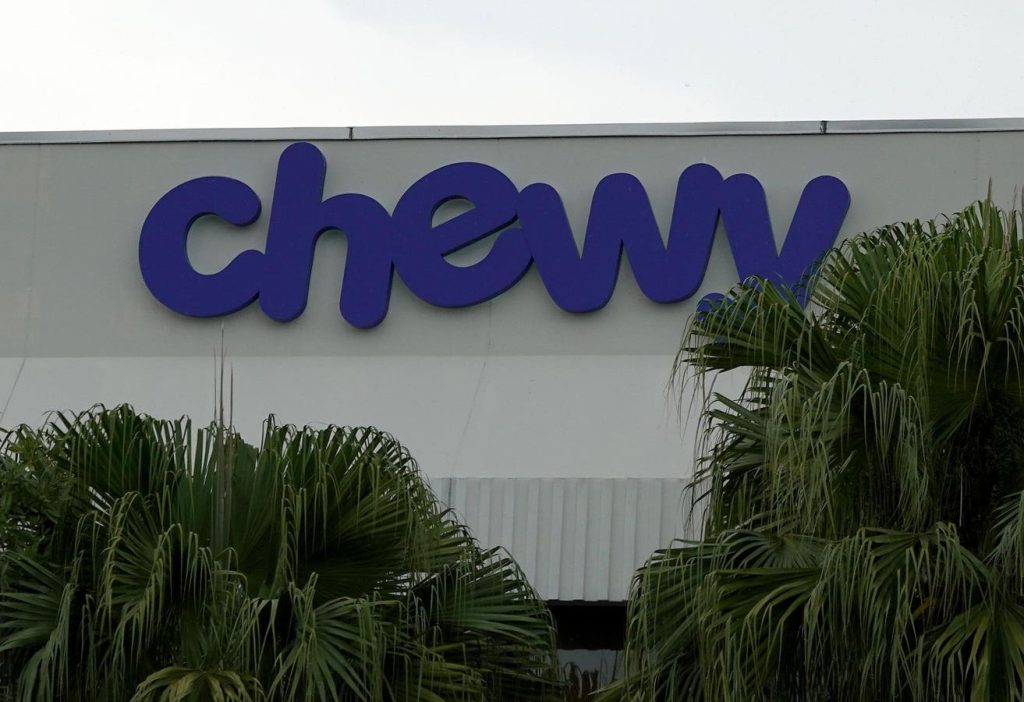Chewy’s Stock Performance and Recent Growth Trajectory
Chewy, the online pet retailer, has experienced a volatile stock market journey. Despite a recent surge of 47% in the past year, bringing its stock price to around $32, it remains significantly below its February 2021 peak of $120 and even lower than its initial public offering (IPO) price of $35 in June 2019. This rollercoaster ride can be attributed to several factors, including the fluctuations in pet adoption rates following the pandemic, which initially boosted demand but then subsided, leading to slower growth for Chewy. However, recent trends indicate a positive shift, with a steady increase in Chewy’s customer base and higher spending per active customer, suggesting renewed growth potential. The company’s optimistic Q4 revenue forecast further reinforces this positive outlook.
Chewy projects a 13% year-over-year revenue increase in the fourth quarter, aiming for $3.12 billion to $3.18 billion. This projection is driven by a strategic focus on acquiring new customers. For the full year, Chewy has revised its sales guidance upward, expecting between $11.84 billion and $11.88 billion, representing a 6% growth rate. This surpasses previous estimates of 3% to 4% growth, signaling improving market conditions and effective execution. Furthermore, Chewy anticipates an adjusted EBITDA margin between 4.6% and 4.8%, exceeding its earlier projection. A key driver of Chewy’s business model is its Autoship program, which automates the delivery of essential pet supplies like food, contributing nearly 80% of total net sales. This recurring revenue stream provides stability and predictability to Chewy’s financial performance.
Chewy’s third-quarter results further illustrate this positive momentum. Revenue grew by 5% year-over-year to $2.9 billion, an improvement from the 3% growth seen in the first two quarters. Autoship sales, a crucial component of Chewy’s business, surged by 9% to $2.4 billion, demonstrating the effectiveness of this recurring revenue model. While the company experienced a slight decline in active customers year-over-year, it added 200,000 new active customers during the quarter, indicating continued expansion of its customer base. Net sales per active customer also increased by 4% year-over-year to $567, highlighting the growing value of each customer to Chewy’s business. Improved margins and strong free cash flow further bolstered Chewy’s Q3 financial performance.
Chewy’s Performance Relative to the Broader Market and Investment Strategies
Despite recent gains, Chewy’s stock performance has lagged behind the broader market over the past three years. The stock experienced negative returns each year, contrasting with the positive performance of diversified investment portfolios like the Trefis High Quality Portfolio. This portfolio, consisting of 30 stocks, has consistently outperformed the S&P 500, demonstrating the potential benefits of diversified investing in mitigating risk and achieving stable returns. The volatility of Chewy’s stock underscores the importance of considering broader market trends and diversified investment strategies for balanced portfolio construction.
The contrast between Chewy’s stock performance and the broader market highlights the inherent risk-return trade-off in investing. While Chewy presents potential upside for investors, its volatility suggests that it is not suitable for all risk tolerances. Diversified portfolios, on the other hand, can offer a smoother ride by spreading risk across multiple assets. The Trefis High Quality Portfolio, for instance, has delivered consistent outperformance compared to the S&P 500, showcasing the potential benefits of a more diversified approach. For investors seeking stable and consistent returns, building a portfolio of high-quality stocks may be a more suitable approach than focusing on individual, potentially volatile stocks like Chewy.
Chewy’s Business Model and Expansion into New Markets
Chewy’s core business revolves around selling food and supplies for a wide range of pets, covering everything from dogs and cats to fish, birds, small pets, horses, and reptiles. This broad product offering caters to a large market and provides diversification within the pet industry. Beyond traditional pet supplies, Chewy has also ventured into new and innovative areas, including personalized products, pet insurance, and telehealth services. These new offerings not only expand Chewy’s revenue streams but also enhance its value proposition by providing comprehensive pet care solutions.
The expansion into personalized products allows Chewy to cater to individual pet needs and preferences, fostering stronger customer loyalty. The pet insurance offering provides financial protection for pet owners against unexpected veterinary costs, while the telehealth service offers convenient access to veterinary care through phone or video consultations. These new initiatives position Chewy as a comprehensive pet care provider, going beyond simply selling products to offer value-added services. This strategic move can enhance customer engagement and drive long-term growth for the company.
Conclusion: Investing in Chewy and the Broader Market
Chewy’s stock presents a complex investment proposition. While the recent stock price recovery and positive growth outlook are encouraging, the stock’s historical volatility and underperformance relative to the broader market warrant careful consideration. Investors interested in Chewy should assess their risk tolerance and consider the company’s long-term growth prospects. Diversifying investments across a portfolio of high-quality stocks, as exemplified by the Trefis High Quality Portfolio, can offer a more balanced and stable approach to achieving investment goals.
Chewy’s strategic initiatives, including its Autoship program and expansion into new markets like personalized products, pet insurance, and telehealth, demonstrate the company’s commitment to innovation and customer-centricity. These efforts position Chewy for continued growth within the expanding pet care market. However, the company’s success ultimately hinges on its ability to execute these strategies effectively and navigate the competitive landscape. Investors should carefully monitor Chewy’s performance and assess the long-term viability of its business model in the context of the broader market and industry trends. Ultimately, a balanced approach to investing, considering both individual stock opportunities and diversified portfolio strategies, is crucial for achieving long-term financial goals.

